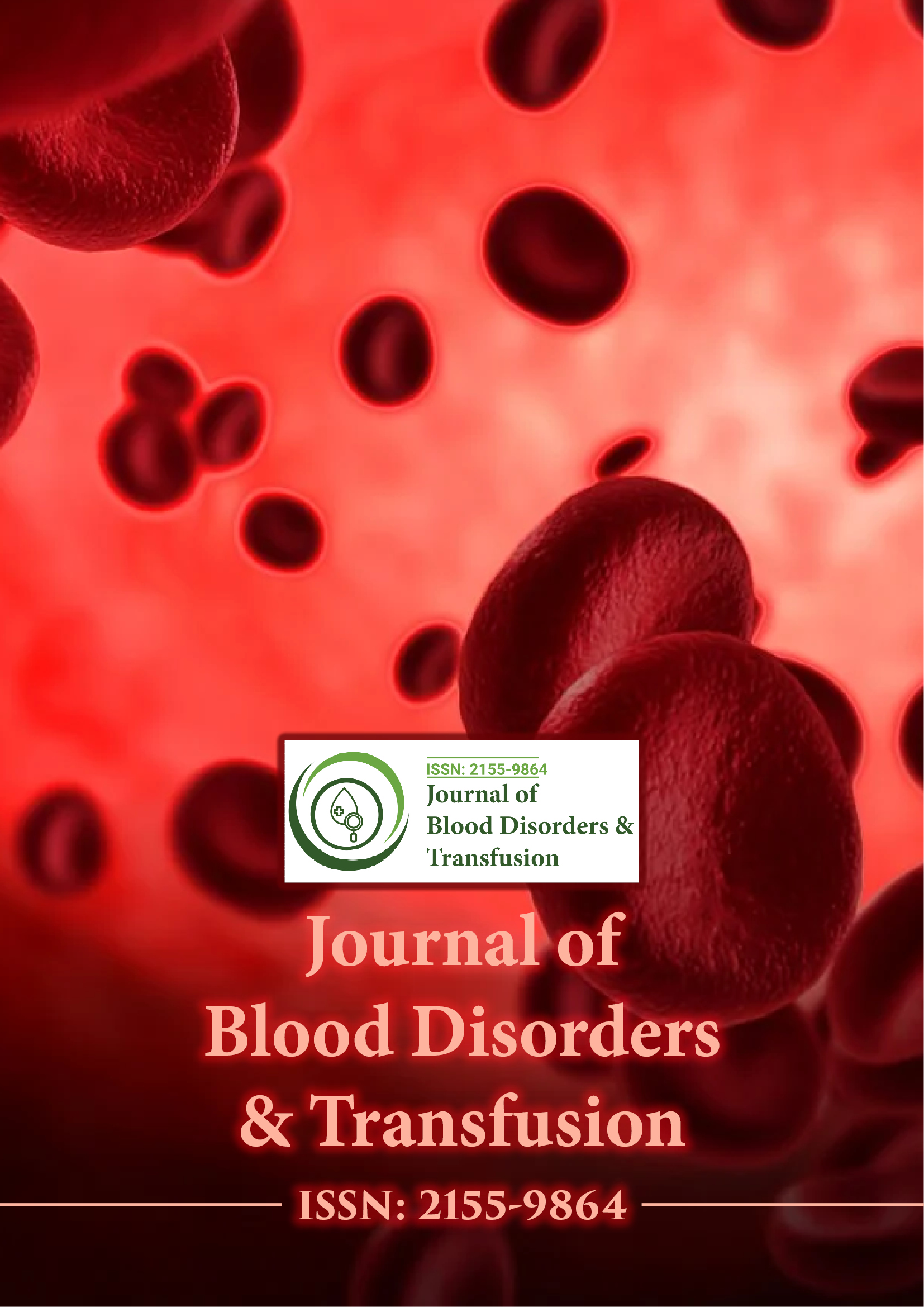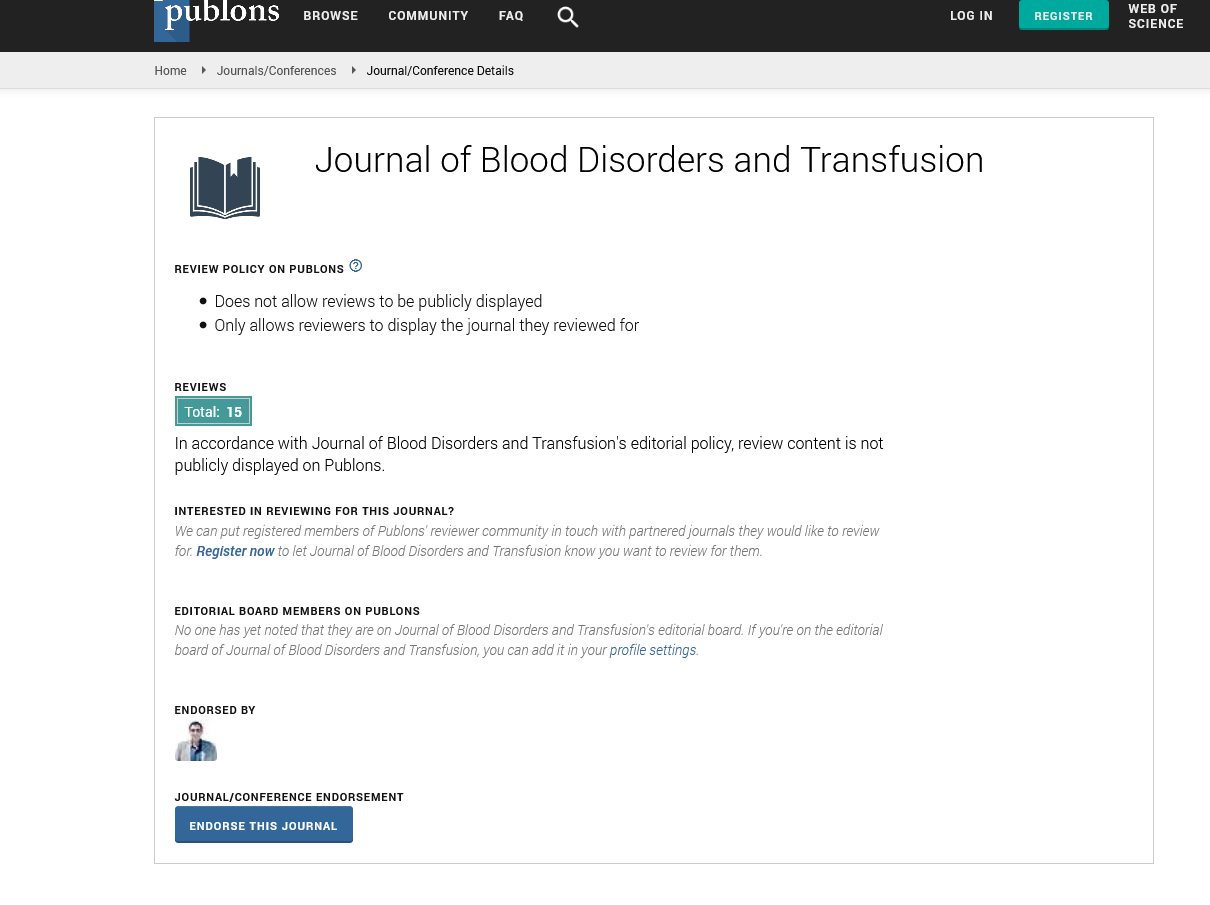Indexed In
- Open J Gate
- Genamics JournalSeek
- JournalTOCs
- Ulrich's Periodicals Directory
- RefSeek
- Hamdard University
- EBSCO A-Z
- OCLC- WorldCat
- Proquest Summons
- Publons
- Geneva Foundation for Medical Education and Research
- Euro Pub
- Google Scholar
Useful Links
Share This Page
Journal Flyer

Open Access Journals
- Agri and Aquaculture
- Biochemistry
- Bioinformatics & Systems Biology
- Business & Management
- Chemistry
- Clinical Sciences
- Engineering
- Food & Nutrition
- General Science
- Genetics & Molecular Biology
- Immunology & Microbiology
- Medical Sciences
- Neuroscience & Psychology
- Nursing & Health Care
- Pharmaceutical Sciences
An ultrastructural and viscoelastic study of the hypercoagulable state of breast cancer patients and the implications for the disease
16th World Hematology Congress
March 18-19, 2019 | Rome, Italy
Janette Bester and Julien Nunes Concalves
University of Pretoria, School of Medicine, RSA
Scientific Tracks Abstracts: Blood Disord Transfus
Abstract:
Statement of the Problem: Breast cancer patients are at an increased risk for thrombotic events such as deep vein
thrombosis (DVT) and venous thromboembolism (VTE), drastically affecting survival and quality life of patients
post treatment. It has been proposed that this increased risk is caused by cancer associated inflammation induced
hyper coagulation, a key factor involved in thrombus formation.
Methodology & Theoretical Orientation: This study utilized microscopy and rheological techniques to examine
coagulation components during clot formation, in order to obtain a better understanding of how changes to these
components may increase thrombus formation and thus the risk of thrombotic events. Whole blood from treatment
naive breast cancer patients were compared to whole blood from healthy controls. Routine clinical tests were used
to obtain an overall clinical picture of each participant. Scanning electron microscopy was used to study the fine
ultrastructure of the red blood cells and platelets. Thromboelastography (TEG) was used to study the changes in clot
dynamics during coagulation.
Findings: SEM showed platelets to be activated as well as a presence of spontaneous fibrin fibre formation. Also, red
blood cells from the patient group showed more irregular surface membranes, increased agglutination and eryptosis
when compared to healthy controls. Results from the TEG showed that clots form faster in breast cancer patients
with increased strength and rigidity, thus revealing the hypercoagulable nature of whole blood in this patient group.
The results in this study have revealed the marked differences in coagulation and associated blood components
between healthy controls and treatment naive breast cancer patients.
Conclusion & Significance: They provide a greater understanding of clot formation dynamics and have shown that
even in a small sample size, breast cancer patients are at an increased risk of thrombotic events, traceable through
rheological techniques. This justifies further investigation into the utilization of these techniques in a clinical, point
of care setting, in order to increase the chance of survival and quality of life for these patient’s post-treatment.
Recent Publications
1. Pretorius E (2018) Erythrocyte deformability and eryptosis during inflammation, and impaired blood rheology.
Clinical hemorheology and microcirculation (Preprint):1-6.
2. Lima L G and R Q Monteiro (2013) Activation of blood coagulation in cancer: implications for tumour
progression. Bioscience reports 33(5):e00064.
3. Khorana LiX, Schwacha M G, ChaudryI H and Choudhry M A (2008) Acute alcohol intoxication potentiates
neutrophil-mediated intestinal tissue damage after burn injury. Shock 29:377.
4. Brose K and A Lee (2008) Cancer-associated thrombosis: prevention and treatment. Current Oncology
15(Suppl 1):S58.
5. DeNardo D G and L M Coussens (2007) Inflammation and breast cancer. Balancing immune response: crosstalk
between adaptive and innate immune cells during breast cancer progression. Breast Cancer Research 9(4):212.
Biography :
Janette Bester research mainly focusses on vascular complications, specifically hemorheology in chronic inflammatory diseases such as type 2 diabetes, breast cancer and prostate cancer patients. She has been establishing her research group as well as her research focus since, 2015. She uses novel techniques that distinguish her from most of the research in her field. Her goal with her research is to improve tissue perfusion to improve wound healing as well as quality of life in patients with vascular complications as well as to determine the thrombotic risk in a specific patient population.
E-mail: janette.bester@up.ac.za

